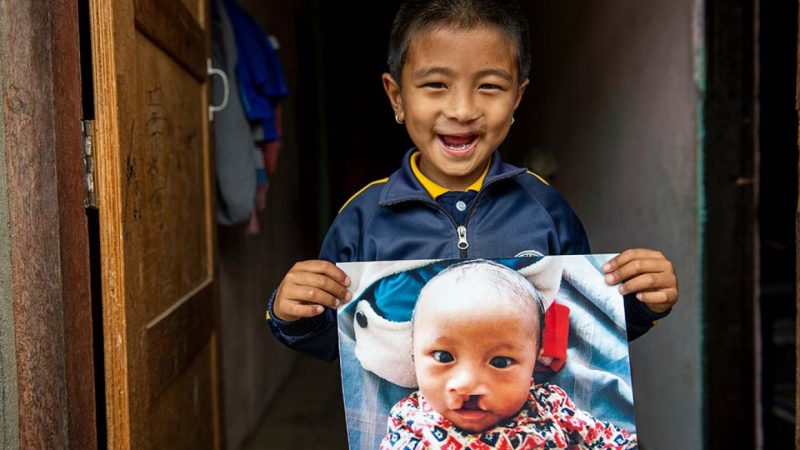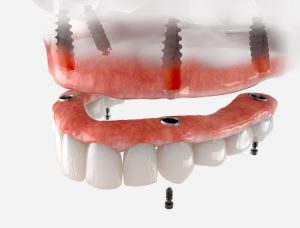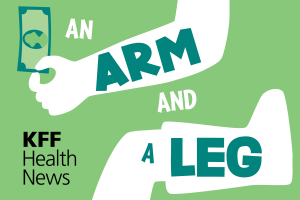‘Perfect partnership’: New tech allows Smile Train to expand global cleft care with Dentsply Sirona

A healthcare worker taking a digital scan of a child’s cleft-affected mouth and teeth in a remote mountainous area is no futuristic vision—it’s reality.
This scenario is possible thanks to two global leaders in their fields. Dentsply Sirona, the world’s largest manufacturer of dental products and technologies, developed Primescan 2, a portable, cloud-based dental scanner that enables healthcare workers to treat patients in remote locations. Smile Train, the largest cleft-focused organization globally, has helped more than two million people access cleft surgeries since 1999.
“It’s a perfect partnership because we manufacture the equipment that allows Smile Train to reach a broader group of patients who might otherwise be unreachable,” said Andrea Frohning, senior vice-president and chief human resources officer at Dentsply Sirona. Frohning is also the executive sponsor of Smile Train’s sustainability and community engagement initiatives.
Dentsply Sirona began a five-year renewable partnership with Smile Train in 2021, committing $5 million in donations, research, development, and technological support to help children and adults affected by clefts.
This collaboration has reached new heights in 2024 with the launch of Primescan 2, celebrated in September in Las Vegas. Primescan 2 is a portable, fully cloud-integrated dental scanner that connects seamlessly with CAD/CAM systems, allowing dentists to design and create dental restorations—including crowns, bridges, and dentures—on-site.
“We work with governments to bring this to scale.” Philip Carroll, Smile Train’s senior vice-president of communication
For Philip Carroll, Smile Train’s senior vice-president of communications, Dentsply Sirona’s expertise in digitalization is creating a global impact.
“We have a vast partner network worldwide, and much of our work with them—including efforts here at DS World—involves training professionals to use this technology in their facilities. Our ‘train-the-trainer’ model creates a multiplier effect with a strong focus on training and capacity building,” said Carroll.
The collaboration also aims to extend its reach across borders. “We work with governments to bring this to scale,” said Carroll, referring to advocacy efforts at international forums like the World Health Assembly and the United Nations General Assembly. “Our focus is on integrating cleft care into healthcare policies so that every child with a cleft has access to safe, quality care and a full, productive life.”
Biggest barrier is distance
The biggest challenge in treating cleft patients is the distance they must travel and the logistical issues of arranging accommodations near care centres.
“Half of our patients travel between two and five hours to reach care facilities; some travel more than 18 hours,” said Carroll. “This technology enables care for more patients and cuts down on these travel costs.”
In May, Smile Train celebrated its 25th anniversary, having provided more than two million cleft surgeries—more than any other cleft charity globally, said Carroll.
Unlike other congenital disorders, which result in hundreds of thousands of associated deaths, cleft lip and palate can be treated with surgical and non-surgical options, along with other congenital disorders such as clubfoot and hernias. Low- and middle-income countries are disproportionately affected by these disorders, as they often lack early medical intervention.
The World Health Organization’s Global Oral Health Status Report (2022) reports a global prevalence of orofacial clefts of one in every 1,000–1,500 births.
People with cleft conditions often face stigma and exclusion from opportunities to thrive.
In its report published in May, titled Smile Train at 25: $69 Billion in Impact, the non-profit highlighted the economic value of 25 years of transforming cleft care. It estimates the organization has boosted economies by $69 billion in more than 90 countries and regained 11 million total productive life years globally, as measured in averted disability-adjusted life years (DALYs).
Impact through innovation
Smile Train was founded by Charles B. Wang, then CEO of the multinational corporation Computer Associates. During his travels, he witnessed children worldwide living with untreated clefts.
“He had seen the mission-based model where doctors are flown into countries to provide care,” Carroll said. “But he reimagined how cleft care was delivered. His ‘teach-a-person-to-fish’ model, training local healthcare professionals within their communities, was groundbreaking.”

Today, this model is reaching new heights, bolstered by portable technology and the know-how to use it effectively.
“Personally, and for the company, we often discuss the importance of doing good beyond just being a great place to work and partner with,” Frohning said.
“It’s not just a cliché—it genuinely feels like we’re making an impact beyond ourselves and our financial stability as a company,” she added. “For us, it’s about how many smiles we can touch and how much joy and health we can bring to people worldwide.”







